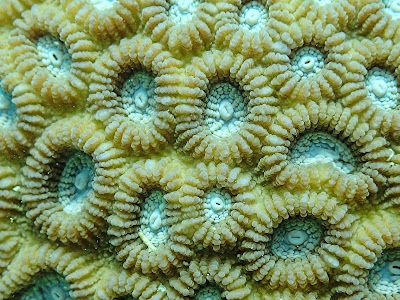The coral reef restoration begins!
After the setting up of the snorkeling
trail providing an improved snorkeling experience to guests and giving
awareness about coral reefs biodiversity and conservation, “Unlock the sea”
starts a restoration project of the coral reef!
"Ecological restoration is the process of assisting a degraded, damaged or destroyed ecosystem back as close as possible to its original state in terms of structure and functions." (1)
"Ecological restoration is the process of assisting a degraded, damaged or destroyed ecosystem back as close as possible to its original state in terms of structure and functions." (1)
The global rapid decline of coral
reefs due to natural and anthropogenic factors has led to the promotion of novel
restoration approaches. One of the most promising and effective method is the
“gardening” concept of active restoration, a two-step process: nurseries and
transplantation .Small colonies or isolated fragments are farmed in in-situ underwater nurseries or reared
first in ex-situ nurseries before being transplanted onto damaged reef areas when they
have reached the adequate size (2,3).
The Seychelles coral reefs have suffered badly from the 1998
bleaching event with a loss of 90% live coral cover (4). The recovery has been
extremely slow, with a mean coral cover of only 7.5% in 2005 (5), which has
promoted active restoration efforts to assist natural recovery of the coral
reefs.
 |
| Aishah, René and Chloé building the in-situ coral nurseries |
The nurseries are almost ready to
go in the water…Lets save coral reefs! To be continued!
Written by Chloé Pozas-Schacre
Written by Chloé Pozas-Schacre
 |
| A broken Acropora coral colony. Be careful with your fins! |
Sources:
(1) Edwards, A.J., Gomez, E.D., Coral
Reef Targeted Research & Capacity Building for Management Program, 2007.
Reef restoration concepts & guidelines: making sensible management choices
in the face of uncertainty. Coral Reef Targeted Research & Capacity
Building for Management Program, St. Lucia, QLD, Australia.
(2) Epstein, N., Bak, R.P.M.,
Rinkevich, B., 2001. Strategies for Gardening Denuded Coral Reef Areas: The
Applicability of Using Different Types of Coral Material for Reef Restoration.
Restoration Ecology 9, 432–442.
(3) Rinkevich, B., 1995. Restoration
strategies for coral reefs damages by recreational activities: the use of
sexual and asexual recruits. Restor. Ecol., 3, 241-251.
(4) Goreau, T., McClanahan, T., Hayes,
R., Strong, A.L., 2000. Conservation of coral reefs after the 1998 global
bleaching event. Conservation Biology, 14(1), 5-15
(5) Graham, N.A., Wilson, S.K., Jennings,
S., Polunin, N.V., Bijoux, J.P., Robinson, J., 2006. Dynamic fragility of
oceanic coral reef ecosystems. Proceedings of the National Academy of Sciences
103, 8425–8429.
(6) Rinkevich, B., 2015. Climate
change and active reef restoration—ways of constructing the “reefs of
tomorrow”. Journal of Marine Science and Engineering, 3(1), 111-127.
(7) van Oppen, M. J., Oliver, J. K.,
Putnam, H. M., Gates, R. D., 2015. Building coral reef resilience through
assisted evolution. Proceedings of the National Academy of Sciences, 112(8),
2307-2313.




Great job Chloe and team!
ReplyDelete